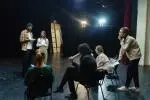What is a musical? In short, a musical is a form of theatrical entertainment that integrates songs, spoken dialogue, acting, and dance to tell a story. The songs and dances advance the plot or develop the characters, making musicals a highly engaging dramatic art form.
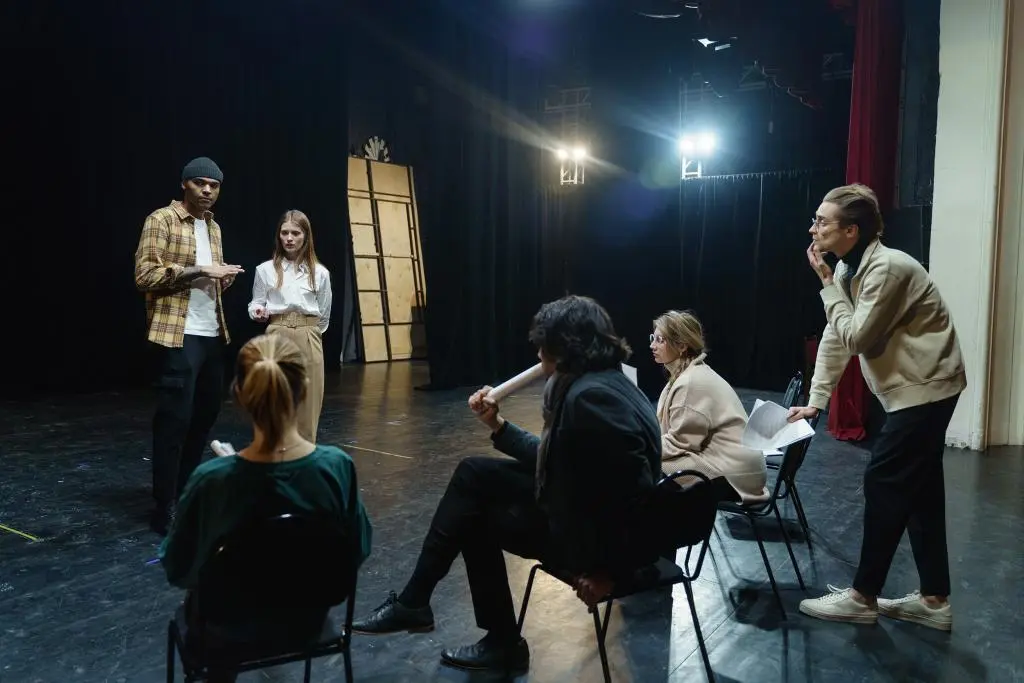
What is a Musical: Table of Contents
Musicals have a rich history spanning centuries of theatre traditions across the world. Elements of musical theatre can be traced back to ancient Greek comedies and Sanskrit dramas which incorporated music and dance. During the European Renaissance, musical components were added to traditional plays. But the modern musical really emerged in the 19th and 20th centuries.
In 1866, a long-running musical called The Black Crook premiered on Broadway, featuring original music, dance numbers, and a melodramatic story. This production established many conventions of musical theatre which remain popular today – lavish sets and costumes, a show-stopping chorus, and spectacular dance routines.
Over the decades, musicals evolved from lightweight comedies and revues into more complex shows. Groundbreaking works by pioneers like George M. Cohan and the duo of Rodgers and Hammerstein added serious dramatic plots and fully integrated songs into the storytelling. Musicals began addressing weightier societal issues and portraying more realistic characters.
The “Golden Age” of musicals arrived between the 1940s to 1960s. Influential shows from this period include Oklahoma!, Carousel, My Fair Lady, and West Side Story. Their ingenious integration of story, song, and dance set new standards for musical storytelling and characterization. The songs became as memorable as the stories.
Today musicals continue to develop as an art form on Broadway, in West End and on screens. Though styles and structures vary widely, musicals still enthrall audiences by blending great music, spectacle, and compelling narratives. The musical remains one of the most vibrant and engaging entertainment mediums.
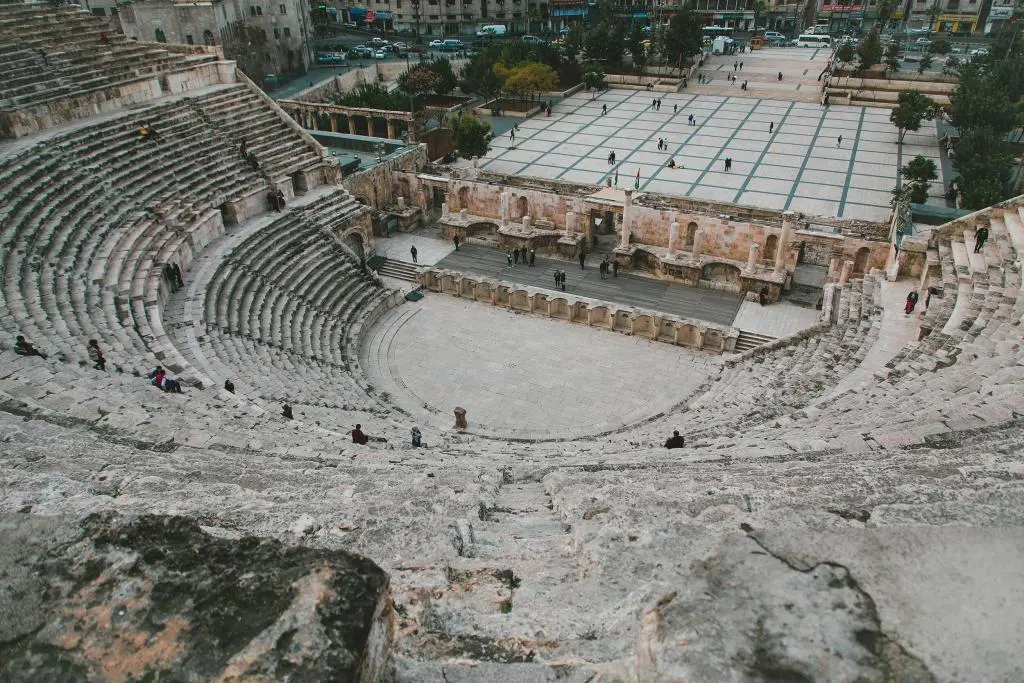
Origins and Evolution of Musicals
The origins of musical theatre stretch back thousands of years across numerous cultures. The earliest known forms emerged in ancient civilizations and laid the groundwork for what would one day become the modern musical.
Ancient Greek Theatre
The origins of musical theatre can be traced all the way back to ancient Greece in the 5th century BCE. At this time, theatre was an important part of Greek culture and society.
Greek comedies and tragedies often incorporated music and dance into their performances. The theatre of ancient Greece integrated poetic forms with musical interludes and lively choreography. Unfortunately, the specific musical structures and compositions from that era have been lost to time.
Only a few fragments of information remain about the musical nature of ancient Greek theatre. What little is known reveals a rich integration of percussive rhythms, lyrical melodies, choral song and movement. Scattered texts describe instruments like the lyre and aulos accompanying dramatic performances.
While ancient Greek theatre pioneered the concept of combining music and drama, the sparse remnants of their musical forms had very little direct influence on the later evolution of musical theatre traditions. However, ancient Greek theatre established one of the key foundations that musical theatre would eventually build upon.
Over 2000 years later, during the golden age of musicals in the 20th century, some shows like Fiddler on the Roof took inspiration from the theatrical traditions of ancient civilizations. But the true ancestry of modern musicals derives most distinctly from more recent forms like operetta, vaudeville and revue. Those popular 19th century stages blended music and theatre in innovative ways that paved the path for Broadway and West End spectaculars.
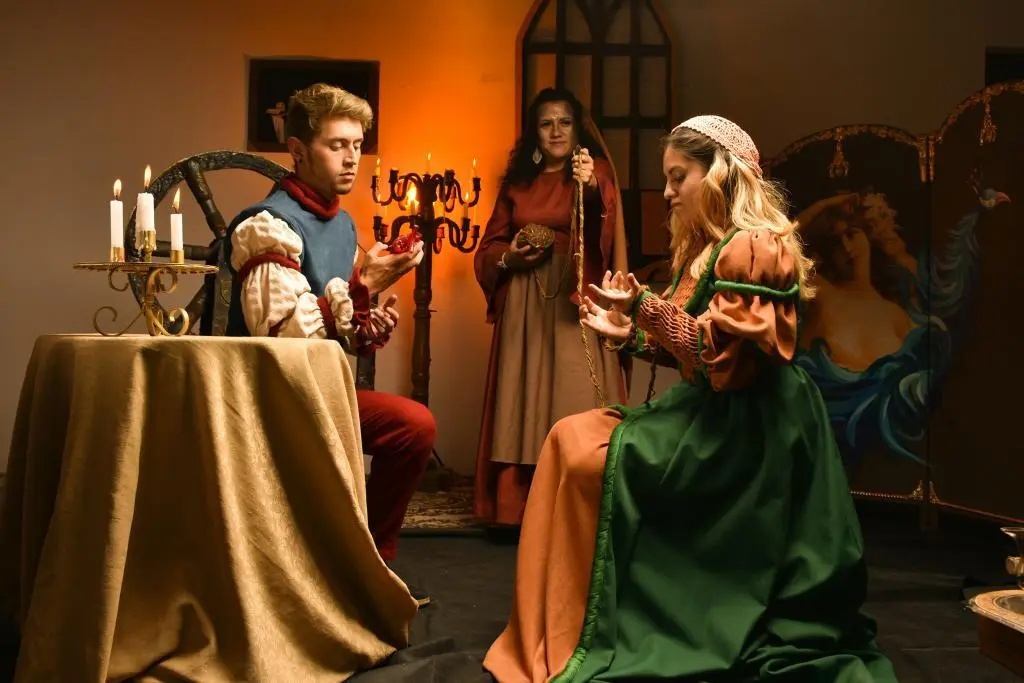
European Renaissance Theatre
During the European Renaissance from the 14th to 17th centuries, traditional theatre began incorporating more musical elements, laying foundations for modern musical theatre.
In England, Elizabethan and Jacobean plays in the 1500s-1600s frequently included music. Short musical scenes were embedded between dramatic spoken passages. The Globe Theatre hosted numerous plays blending music with Shakespearean drama during this period.
A form of early English musical theatre called masques also emerged, becoming popular at royal courts. Masques were lavish productions involving singing, dancing and acting by performers in extravagant costumes and fanciful masks.
The masque reached its peak during the reign of King Charles I in the early 1600s. Notable masque writers included Ben Jonson and Inigo Jones. The masque conveyed allegorical meaning and capitalist themes through its poetry, songs, ornate sets and visual spectacle.
While not yet full-fledged musical theatre, these Renaissance forms explored integrating music and theatre in new ways. The masque’s pageantry directly impacted later English stage productions like modern pantomime and ballad opera.
So this period planted key seeds that eventually grew into musical theatre centuries later. The creative spirit of the Renaissance explored fusing storytelling, verse, song and dance to craft heightened dramatic experiences. These concepts continued influencing theatre until the first recognizable musicals emerged.
19th Century Theatre Forms
The 19th century saw musical theatre evolve into more recognizable forms. A variety of popular stage entertainment laid the groundwork for what would become the modern musical play.
In the first half of the 1800s, musical theatre was dominated by European imports like operetta, comic opera, and ballad opera. Operetta especially, with its mix of humor, satire, and lighthearted music, became quite fashionable on both sides of the Atlantic. Jacques Offenbach was the leading operetta composer in France.
The bawdy entertainment of British burlesque soon crossed over to American stages. Burlesque blended music, dance, and comedy with a mildly risqué flavor. The American iteration also incorporated elements from minstrel shows, vaudeville, and revue-style spectacles.
Minstrel shows, featuring white performers in blackface, also emerged as a uniquely American musical form. Songs mingled with slapstick routines and crude racial stereotypes.
In 1866, New York’s long-running musical The Black Crook debuted a more integrated style of musical theatre. It wove original songs and dances into a dramatic gothic story with lavish production values. This pioneering “musical play” pointed towards the future Broadway model.
So by fertilizing theatre with a diversity of boisterous musical entertainments, the 19th century cultivated an audience appetite for spectacular song-and-dance shows. This vibrant period laid crucial groundwork for the first modern musicals at the turn of the 20th century.
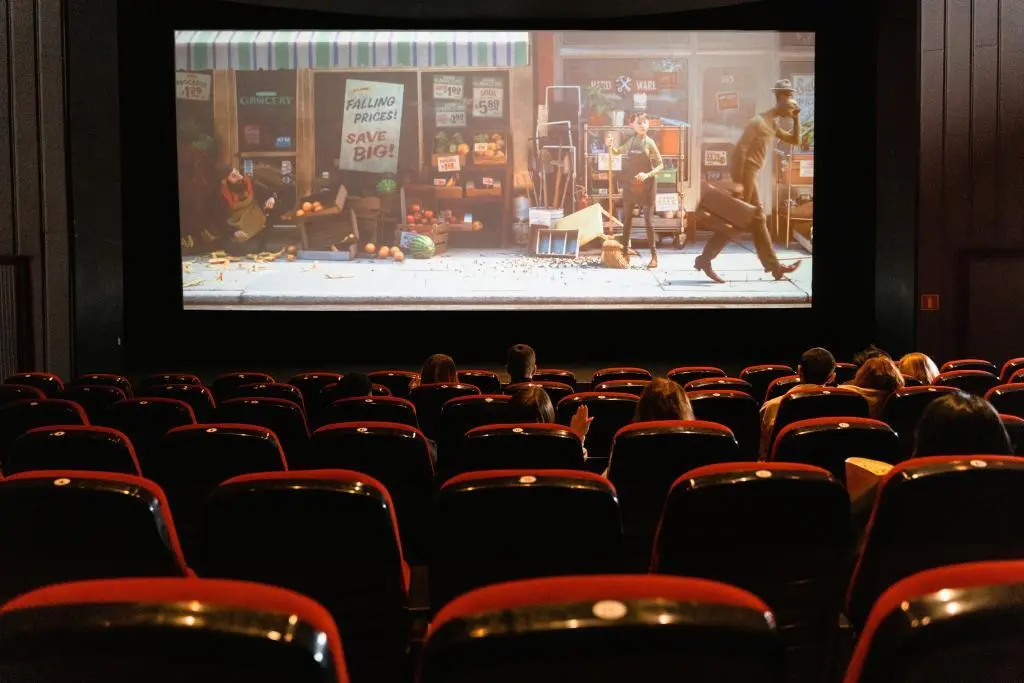
The Golden Age of Musicals (1940s-1960s)
The period from the 1940s to 1960s is known as the “Golden Age” of musical theatre, when the genre reached new heights of popularity and sophistication.
Rodgers and Hammerstein
Several creative pioneers molded musicals into a respected dramatic art form during this era. Their innovative shows set new standards for integrating music, dance, and storytelling that still influence Broadway today.
The songwriting duo Rodgers and Hammerstein were the most influential contributors to the Golden Age musical. Their string of hits together revolutionized musical storytelling and took the genre into bolder dramatic territory.
Some of their landmark shows from this period include Oklahoma!, Carousel, South Pacific, The King and I, and The Sound of Music. Rodgers crafted sweeping, hummable melodies while Hammerstein wrote poignant lyrics that advanced the story. Their songs blended seamlessly into compelling book musicals with serious themes.
Whereas earlier shows might haphazardly insert songs, Rodgers and Hammerstein used music like dialogue – songs expressed a character’s emotions or thoughts. Dance also became integral to their musicals. Shows like Oklahoma! fully integrated balletic and modern dance into the narrative.
Rodgers and Hammerstein proved musicals could tell substantive stories that resonated with audiences. Their pioneering approach made musicals into a sophisticated, commercially successful art form through the Golden Age and beyond.
Other Notable Works
While Rodgers and Hammerstein produced some of the most influential musicals of the Golden Age, many other timeless shows helped shape Broadway during this era.
Musicals like My Fair Lady, Guys and Dolls, West Side Story, and Fiddler on the Roof also became classics of the Golden Age. They took musical storytelling to new heights and addressed serious societal issues.
- My Fair Lady (1956) adapted George Bernard Shaw’s play Pygmalion into an unforgettable musical starring Rex Harrison and Julie Andrews.
- Guys and Dolls (1950) brought Damon Runyon’s colorful criminal characters to the Broadway stage with a vibrant Frank Loesser score.
- West Side Story (1957) retold Romeo and Juliet in 1950s New York City, exploring themes of racial prejudice through its rival street gangs.
- Fiddler on the Roof (1964) poignantly portrayed the experiences of Jewish families in tsarist Russia at the turn of the century.
These musicals deftly tackled weightier subject matter such as gender roles, organized crime, racism, and immigration – proving musicals could deliver substantive stories alongside great songs and dancing.
The Golden Age musicals remain beloved for their enduring music, gripping plots, and innovative artistry. They made musical theatre into a sophisticated dramatic form at the forefront of popular culture during their era.
Types of Musicals
Beyond the Golden Age classics, musicals have continued evolving into a diversity of forms that creatively integrate music, dance, and drama. Some of the major types of musical theatre include:
Book Musicals
Book musicals tell a captivating story using music and production numbers to evoke emotions beyond just laughter. The songs and dances are seamlessly woven into the narrative rather than randomly inserted.
Unlike revues or jukebox musicals, book musicals follow a specific dramatic structure. The first act introduces characters and plot points, often ending in a cliffhanger. The second act resolves conflicts and brings emotional arcs to a conclusion.
Within this architecture, songs amplify poignant moments or reveal inner thoughts. Lyrics and melodies heighten the audience’s emotional experience. Dance interprets significant scenes through movement.
Classic examples of book musicals include Oklahoma!, My Fair Lady, and Les Miserables – shows driven by an engaging dramatic storyline. The songs emerge naturally from character and situation to create powerful “musical plays.”
Book musicals use well-crafted plots, like a novel or play, allowing music and dance to fully support the storytelling. This seamless integration of elements became the hallmark of musical theatre’s maturation into a respected dramatic genre.
Jukebox Musicals
A uniquely modern form of musical theatre is the jukebox musical, which uses pre-existing pop songs to tell a story.
Unlike original musicals, the creators of a jukebox musical do not write new songs. Instead, they piece together a narrative around already popular tunes.
The songs are repurposed and reinterpreted to fit the characters and plot. Familiar melodies take on new meaning in the theatrical context. The disparate tracks unify into a cohesive musical story.
ABBA’s hit songs became the perfect fodder for the jukebox musical Mamma Mia! in 1999. The theatrical production wove a fictional tale of a bride-to-be searching for her father set entirely to ABBA tunes. It became a smash hit on Broadway and West End.
Other successful jukebox musicals include Jersey Boys using Frankie Valli and the Four Seasons’ catalog and Rock of Ages featuring 1980s glam metal anthems. Their recycled scores feel fresh and serve the musicals’ narratives.
Jukebox musicals allow audiences to experience beloved songs in a new light and follow characters brought to life through iconic music. The art is crafting an original story around the pre-determined songbook.
Film Musicals
The musical theatre genre has crossed over extensively to the big screen. Film musicals blend cinematic storytelling with original song and dance performances.
Like stage productions, the songs and musical numbers in a film musical are interwoven with the narrative and characters. The music advances plot points or conveys emotions just as it would in a Broadway show.
However, film musicals utilize the advantages of the cinematic medium for more complex choreography and special effects. Camerawork, editing, and on-location filming creates new possibilities.
Classic film musicals include Singin’ in the Rain, West Side Story, The Sound of Music, and Funny Girl. In recent decades, hit films like Chicago, La La Land, and The Greatest Showman have demonstrated the genre’s continued box-office appeal.
The performances are typically recorded live on set rather than pre-recorded to capture natural movement and vocals. Actors both sing and dance while embodying their characters.
Film musicals aim to recreate the experience of live theatre through a seamless interplay of story, song, and visuals. This big-screen genre has introduced musical storytelling to wider mainstream audiences.
Concept Musicals
Unlike traditional book or film musicals, concept musicals do not follow a conventional linear story structure. The narrative takes a backseat to creatively exploring a central idea or theme.
Rather than developed characters and plot, concept musicals express an overarching message, mood, or conceptual throughline. Songs, dances, poetry, and experimental theatrics all poetically illustrate the main concept.
The audience experience relies more on abstract imagery, symbolic vignettes, and emotive musical numbers than a traditional dramatic arc. The visual spectacle supports the cerebral substance.
Concept musicals thrived Off-Broadway in the 1960s as audiences sought more avant-garde, innovative theatre. Shows like Hair used unstructured narratives and rock music to comment on hippiedom and antiwar sentiment.
More recent examples include The Donkey Show exploring disco culture in a loose Midsummer Night Dream adaptation and American Idiot tackling post-9/11 angst through Green Day songs.
Though less story-driven, concept musicals succeed by fully immersing the audience into experiencing the central subject. Their nonlinear approach evokes powerful sensations through imaginative stagecraft.
Key Elements of Musicals
While musicals have diversified into a variety of forms, they all share core elements that distinguish musical theatre as an art form. The interplay of these ingredients creates the musical’s emotional impact.
Music and Lyrics
The beating heart of any musical are its songs – both the sweeping melodies and poetic lyrics. The compositions establish the musical’s unique soundscape, convey inner feelings, and propel the storytelling forward. Memorable scores give musicals their resonant emotional power to enthrall audiences.
Clever lyrical writing reveals a character’s deepest mindset or philosophies, often better than prose dialogue alone could. Rhyming verses set to melodies articulate human relationships, motivations, and dilemmas with poetic eloquence.
Soaring melodies, meanwhile, shape the musical’s aural landscape. Composers intentionally reprise certain melodic motifs to subliminally link characters or ideas. Triumphant crescendos swell at dramatic high points. Haunting minor-key melodies underscore solemn moments. The score’s tonal range matches the story’s shifting emotional palette.
When lyrics and melodies synergize, songs become critical storytelling vehicles rather than disjointed breaks. The most acclaimed musicals seamlessly integrate music into the narrative arc. Songs should unveil a protagonist’s innermost thoughts, push the plot forward, or amplify the impact of a pivotal scene.
During significant songs, the audience leans in, connecting more deeply to characters as lyrics vocalize hidden truths. The melody’s cathartic power elevates the revelation. This interplay creates musical theatre’s most resonating and exhilarating moments.
Truly great musicals use lyrics and composition in perfect harmony to articulate the human condition in ways prose alone cannot. The score’s poetic and tonal resonance gives musicals their gripping emotional depth.
Choreography
Dance is an integral part of musical theatre, adding kinetic energy and visual spectacle. The choreography is designed to advance the storytelling and complement the plot and characters.
In a musical, dance does more than provide eye-catching interludes – it communicates narrative and emotion through movement. Choreographers craft dances that interpret important themes or moments.
Signature dance numbers will vividly illustrate characters’ feelings, relationships, or inner conflicts. For example, dense synchronized choreography could convey a sense of order and conformity that traps the protagonist.
Complex tap sequences allow talented performers to showcase their skills. Dream ballets depict a character’s fantasies coming to life through dance. Montages may progress storylines wordlessly through dance.
Choreography adds layers of subtext and symbolism to the story. Creative dance routines augment and enhance key plot turns. Movement can deliver exposition in theatrical ways.
Kinetic choreography also adds striking visual variety to balance out book scenes and songs. The dance dimension differentiates musicals from straight plays and spoken word operas. Motion and music combine to generate unique theatrical energy.
Production
While the choreography, score, and book create the artistic fabric of a musical, the underlying production elements enable a show to physically come together.
The producer plays the most crucial behind-the-scenes role in mounting a musical production. This visionary shepherds the show from concept to opening night and beyond.
The producer nurtures the project’s development, selects creative talent, secures financing, and oversees all business aspects. They assemble the full production team including writers, directors, designers and managers.
Their most vital duty is raising enough investment capital to fund all production costs – which can total $5-15 million for large Broadway shows. The producer continually courts new investors and manages these complex financing arrangements.
They also negotiate contracts with theatres, marketing teams, unions and other stakeholders to lock in deals. The producer navigates all logistics, legalities, and budgeting.
While the creatives build the artistic vision, competent producers provide the crucial infrastructure and leadership to functionally realize that vision. Their business acumen allows theatrical artistry to flourish.
So though unseen by audiences, dedicated producers are indispensable to bringing musicals to the stage and keeping them running night after night.
Plot
In early musicals, songs were the stars and plot was secondary. But as the art form matured, stories became increasingly prominent and integrated with the music.
Musicals started relying less on thin “book” plots merely stringing together disjointed songs and spectacle. Storytelling craft improved to fully support memorable scores.
Lyrics evolved to spring from plot situations and characters rather than preceding them. Songs amplified emotion, revealed insights, and drove the narrative – all firmly grounded in the story context.
Musicals focused on fleshing out complete dramatic arcs, inner conflicts, and complex character motivations. The book scenes gained nuance and depth through quality writing.
Strong, organic plotting provided weight for musicals to explore serious themes. Songs could enhancing key moments rather than feel tacked on.
Musicals like West Side Story, Man of La Mancha, and Sweeney Todd exemplified the shift toward prioritizing integrated storytelling. Plot, music, and dance fluidly supported each other.
The journey from “musical revue” to “musical play” elevated musicals as a sophisticated art form. A compelling book became the sturdy spine holding spectacular production numbers together in a cohesive experience.
Musicals vs. Operas
While musicals and operas both incorporate music into drama, there are distinct differences between these musical theatre forms.
The most salient distinction is that musicals include spoken dialogue, while operas are sung entirely. Operas utilize recitative song styling for all narrative exposition and discourse between characters.
Musicals strategically blend bursts of lyrics and melodies with passages of ordinary acting and speech. Songs arise organically from the story rather than persistently filling all gaps in discourse.
In musicals, songs color and complement the plot rather than comprising it. Removes and choruses embellish scenes, convey emotions unnaturally, or provide spectacle. But the bulk of the story unfolds through dialogue.
By contrast, in operas the sung vocals are inseparable from the plot – the libretto lyrics explicitly deliver all crucial action. Subtract the singing and you lose the entire narrative.
Essentially, musical numbers play a more peripheral role within the broader plot of musical theater. The songs punctuate and enhance key moments rather than exclusively communicating the full storyline. Opera relies wholly on music and sung poetry to tell the tale.
Impact and Popularity
Since their Golden Age heyday, musicals have permeated popular culture and retained worldwide popularity through various mediums and productions.
Big-budget Hollywood musical films have brought Broadway-style song-and-dance spectacles to multiplexes for decades now. Movie musicals like Grease, Chicago, and Mamma Mia! have crossed over into mainstream culture.
Meanwhile, Broadway produces a steady output of new musicals alongside revived classics. Nostalgic hits like Cats and The Phantom of the Opera enjoy yearslong unbroken runs. Timeless shows get frequently revived.
Regional theatres, international stages, and touring productions ensure musicals permeate communities globally. Fans need not travel to NYC to catch locally mounted musicals.
High schools and community theatres enable non-professionals to participate firsthand in musicals. These amateur shows cultivate future audiences and talent.
Thanks to this saturation across mediums and cultures, musical theatre touches people worldwide, even those not actively seeking it out. Musical themes infuse pop music and animated films. Songs go viral on TikTok.
The musicals’ combination of resonant storytelling, lyrical emotional catharsis, dazzling choreography, and larger-than-life spectacle gives them an enduring universal appeal. Their popularity is perpetually renewed for new generations.
Final Thoughts
Musical theatre has captured imaginations for centuries through its infectious blend of music, dance, acting, and spectacle. This beloved performance art form has continually evolved across eras and cultures while retaining its core appeal.
From its roots in ancient civilizations to its Golden Age heyday to modern revivals, the musical has proven its longevity and versatility. Composers, lyricists, choreographers and directors have innovated and experimented within the form across generations.
While specific styles and structures vary wildly, musicals ultimately strive to tell resonant stories through song. Memorable melodies lyrically express emotions in visceral ways. Choreography adds kinetic physicality. Productions enthrall with lavish pageantry.
This alchemy enraptures audiences universally and remains culturally cherished worldwide. The musical brings people together through shared enchanting experiences that engage minds, bodies, and souls on multiple dimensions.
So whether a minimalist off-Broadway original or a spectacle West End blockbuster, musicals continue doing what they do best – blending stellar music, movement and drama into profoundly affecting theatrical magic. The human spirit, ever longing to be transported to new emotional heights, ensures that this art form will carry on delighting audiences for ages to come.

